News
View the latest inspiring and positive news and information about what's going on in the PM and IT world.

Date: 31/03/2021
The ABC Scrum Master course is aimed at anyone who wishes to get sufficient knowledge and understanding of Agile Principles and the Scrum Guide to start helping teams and organisations adopt Scrum.
The ABC Scrum Master exam is a closed-book examination and is intended to address the knowledge and skills that demonstrate proficiency in knowledge and understanding of the Scrum Framework.
Let’s dive into the characteristics of the exam!
Read more
Examination Target
- Anyone involved in product & solution development using the Scrum framework
- Scrum Masters, managers and Scrum team members
- Aspiring Scrum Masters
- Solution Developers & Testers
- Team Leaders
- Process Owners & Managers
- Individuals involved in product delivery using the Scrum framework
Exam Format
- Language: German, English, French
- Duration: 40 minutes (50 for non-native speakers)
- Materials: No materials
- Closed book exam
- Questions: 50
- All 50 questions are Objective Test Questions (OTQs)
- Pass Mark: 34 marks or above
- Level of Thinking: Bloom’s levels 1 & 2
- Exam Format: Online or Paper
- Certificate Format: Online
Exam Sample Questions for ABC Scrum Master Exam
There are a number of different test styles used within the exam. All test styles are based on the selection of the correct answer from a choice of 4 options. The test styles are Standard, Negative, Missing Word, Select (list), Select (evaluation).Example ‘standard’ OTQ
Which is a Scrum Event? a) Q b) R c) P d) SExample ‘negative’ standard OTQ
Which is NOT a Scrum Value? a) Q b) R c) P d) SExample ‘missing word’ OTQ
Identify the missing words in the following definition of Scrum. Scrum is a framework within which [ ? ], while productively and creatively delivering products of the highest possible value. a) Action Q b) Action R c) Action P d) Action SExample ‘select (list)’ OTQ
How should a Scrum Master serve an Organization? 1. It does Q 2. It does R 3. It does P 4. It does S a) 1, 2, 3 b) 1, 2, 4 c) 1, 3, 4 d) 2, 3, 4Example ‘select (valuation)’ OTQ
Which of the following statements about the use of Scrum are true? 1. It does Q and R 2. It does P a) Only 1 is true b) Only 2 is true c) Both 1 and 2 are true d) Neither 1 or 2 is true → Read now: What is a Scrum Master? Role and ResponsibilitiesABC SCRUM Master Objectives
The objective of the examination is to enable you to demonstrate an understanding of the Scrum Master Concepts (or Rules), Roles, Events and Artefacts. The learning objectives for ABC Scrum Master are:- Gain a deep understanding of the Scrum Framework – the theory, practices, roles, rules and values – as defined in The Scrum Guide.
- Understand – in detail – the role of Scrum Master and how the role interacts with different members of the Scrum Team and other stakeholders.
- Master the Scrum principles to better understand their application when returning to the workplace.
- Understand how to construct an effective development team with an appropriate mix of skills and experience.
- Know how to act as a servant-leader for the Scrum Team, promoting and enabling self-organization to create high-value products.
- Learn how to facilitate Scrum Events and remove impediments to the Scrum Team’s progress.
- Help Scrum Product Owners shape and refine product backlogs to guide early and incremental delivery of valuable products.
- Drive adoption of the Scrum framework for more effective product and solution development, working with stakeholders and other Scrum Masters to improve its effectiveness.
ABC SCRUM Master Certificate
The validity of the ABC Scrum Master certificate is a lifetime. This certificate will never expire. QRP International is a Scrum Master Accredited Training Organisation (ATO) by APMG, is authorized to deliver ABC Scrum Master courses and can prepare you for the examination leading to the ABC Scrum Master Certification.
Date: 24/03/2021
With the same experience and curriculum, it is obvious that, when applying for a job, a candidate in possession of a certification attesting to their knowledge is an advantage.
In this article, we analyze the benefits of obtaining a PMP certification to understand how, on a practical level, this can be fundamental for a successful career in the world of Project Management.
Read more
Why a PMP certification?
It is essential to understand why PMP certification is so important in Project Management. The PMP certification:- Provides a large body of highly expendable transversal knowledge
- Has over 1 million certified professionals in 200 countries
- Is recognized internationally and in all sectors
- Helps in professional growth and in affirming one’s knowledge
1. Common language
The internationality and widespread use of the PMP method allow all certificates to speak a common language. Which is understandable regardless of the type of sector, cultural and/or business background. This means that at a potential level all certified PMP professionals can work in a team without having communication problems. Making it possible not only for a professional to work at their best in their team, but to be able to achieve goals in any team.2. Network of professionals
There are more than 1 million certified PMP professionals worldwide. In addition to actively participating in the events and initiatives proposed directly by the PMI, they can join other communities, called the PMI Chapters, distributed geographically. Thanks to these networks, professionals can get in touch with each other, follow webinars and workshops and above all stay up to date on the news promoted by the PMI. This guarantees certified professionals to be aware of the latest trends and developments in the world of Project Management, an area in which being always up to date is really essential.3. Career options: More responsibilities and challenging projects
Obtaining the PMP certification demonstrates that a professional possesses the knowledge, skills and abilities necessary to be able to receive greater responsibility within the most important projects for the success of the organisation. This allows the professional to work both in more important roles and on more interesting and stimulating projects, thus creating a virtuous cycle with a continuous work on skills. Constantly aiming to be able to work on projects that require more and more commitment and lead to increasingly complex challenges. This allows the professional to find more and more stimuli in his/her work, increases his/her professional profile, making it more usable and of a high level.4. Salary increase
It is obvious that the salary benefit should not be overlooked: according to a PMI research, more than 80% of professionals who have obtained a certification have a salary that is 22% higher than the non-PMP certified professionals. In addition, even starting a new job, PMP certification ensures the candidate a starting salary that is around 20% higher in most cases. → Read Now: The PMP Exam – all you need to know As an Accredited Training Provider (ATP), all the PMP certification courses provided by QRP International guarantee the automatic recognition of the PMP Contact Hours necessary to access the exam. For all information, consult the course calendar or write us!
Date: 17/03/2021
As many of you know the PMBoK is coming out this year.
Yes, like many of you I am eager to get my copy - #Excited!
Luckily PMI members have free access to the electronic version via pmi.org.
Now many of you are asking yourselves why should it change?
What is the big deal?
And to answer these questions it is important to understand the business and societal landscape in which we find ourselves. A few years ago I proposed a slightly different version of what we all know to be the VUCA model, called DACRI (Diversity, Ambiguity, Complexity, Rapidly-changing, Interdependence).
This model emphasized that the world has gravitated towards a more diverse, ambiguous, complex, rapidly-changing and interdependent project management landscape. The COVID-19 pandemic has accelerated these factors while disrupting ‘normal’ ways of working leading to unprecedented changes in business and society.
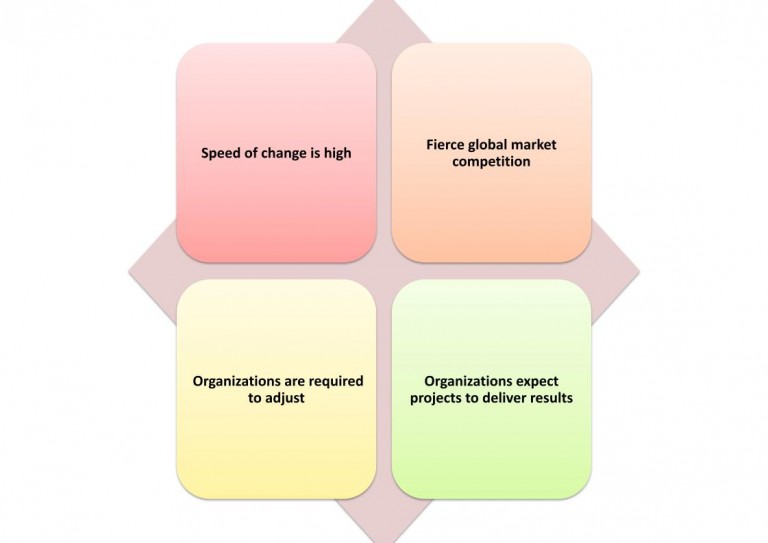 These unprecedented challenges have catalyzed the need for companies to enable a more agile and rapid transformation across all fronts. One is for sure; many environmental forces are at play to transform our profession of project management.
In PMI’s strategic plan they rightly point out the below forces that require continuous evolution of project management to help “Empower people to make ideas a reality”, which is the essence of project management:
These unprecedented challenges have catalyzed the need for companies to enable a more agile and rapid transformation across all fronts. One is for sure; many environmental forces are at play to transform our profession of project management.
In PMI’s strategic plan they rightly point out the below forces that require continuous evolution of project management to help “Empower people to make ideas a reality”, which is the essence of project management:
What fascinates me the most about the transformation is the focus on project outcomes.
This is novel in a way because project management has traditionally focused on outputs.
Focusing on outcomes means shifting away from a process approach that can be considered a hallmark of the previous versions of the PMBoK and has been the main focus ever since I can remember being a PMI member.
Processes will no longer be part of the core PMBoK. They will be part of the PMI standards + platform.
Now do not get me wrong, I am not saying that processes are not important. A process is an activity or series of activities, that converts an input, to an output, by doing work. Processes exist to add value, achieve outcomes and meet the requirements of customers.
They are integral in arriving at the desired outcomes. However, when outcomes are at the forefront, they force PMs to “think with to end in mind” as one of my favourite personal development gurus famously said:

Read more
 These unprecedented challenges have catalyzed the need for companies to enable a more agile and rapid transformation across all fronts. One is for sure; many environmental forces are at play to transform our profession of project management.
In PMI’s strategic plan they rightly point out the below forces that require continuous evolution of project management to help “Empower people to make ideas a reality”, which is the essence of project management:
These unprecedented challenges have catalyzed the need for companies to enable a more agile and rapid transformation across all fronts. One is for sure; many environmental forces are at play to transform our profession of project management.
In PMI’s strategic plan they rightly point out the below forces that require continuous evolution of project management to help “Empower people to make ideas a reality”, which is the essence of project management:
"The only constant in life is change”-HeraclitusWith the environment changing, the impact on project work is undeniable. According to a report from Accenture, titled ‘Shaping the Agile Workforce’, 79% of executives agree that work is shifting from roles to projects. This will impact the new PMBoK.
The new PMBoK - 7th edition
You are probably aware that the new PMBoK will not be following the rules of its predecessors. It will be a rebel of sorts. What do I mean by that? Well, the transformation from the sixth edition to the seventh will imply a few transformative elements. Many people are calling this a “dawn of a new era” in project management. Here is an overview of some of the changes that I was able to research:| PMBoK 6th edition | PMBoK 7th edition | |
|---|---|---|
| Overall Approach |
|
|
| Basis for Design |
|
|
| Project Environment |
|
|
| Project Application |
|
|
| Target audience |
|
|
| Degree of change |
|
|
| Tailoring guidance |
|
|
"Begin with the End in Mind" - Stephen Covey (1989)
As Project Managers, we often succumb to the pitfall of focusing too much on our outputs, deliverables and processes. This is because the very nature of our craft focuses on adhering to a methodology. We focus on "doing things right" through a sub-set of processes (the “HOW”) while attaining the output of the plan (the “WHAT”). In this regard, I like how the new PMBoK approach will help to re-orient us towards the outcomes (the “WHY”) of doing things. Help you focus on outcomes vs outputs project (and to take it a step further on benefits). The PMBoK is shifting the focus from outputs to outcomes. → Read Now: PMI-PMP: the New ExamOutcome thinking
Outcome thinking is result-focused. It is a mindset behavioural change, which will require many to think differently. Some Project Managers, who have found comfort in processes, will be pushed out of their comfort zone to use judgement and experience to guide outcome-thinking rather than relying heavily on a methodology. Emphasizing outcomes will help foster a generation of Project Manager that “think with the end in mind” rather than comply with processes. This will help us to re-think how we approach our craft. Many project management professionals have sought comfort in the stability and certainty of processes. In the world of yesterday, managing uncertainty required a structured process-focused structure of predictability. This is no longer enough, in our unprecedented, disruptive and unpredictable world – we need to develop project management gut instinct. The world that we live in today is much more complex than ever before. It requires focusing on the outcome and adapting various tools, techniques and methodologies to reach strategic objectives. Not one methodology is a sure shot for success – actually it never was. Following processes was never enough. That is why when I talk about the new PMBoK as somewhat a revolutionary approach, it will be – and I welcome this new era. It will require many of us who have been brought up through a process approach to unlearn some conventional thinking. It will require us to be bold and dare to deviate from conventional thinking. I have never considered myself a Rebel – but to adapt to the new realities of today and start embedding the ways of working of PMBoK 7th edition, I think I will have to challenge the status quo and become a PM rebel.To conclude: Be Bold – and dare to deviate to drive outcome!
The next chapter of this journey will be about competency development and the skills needed to support an outcomes-driven mindset. This is what PMI is calling “Power Skills”. I recently watched a video on a recent PMI Madrid Chapter event, where Ashwini Bakshi was presenting. It was inspirational, to say the least, but what really captured my attention was the evolution of PMI’s Talent Triangle towards what is called “Power Skills”. These skills are unique and focus less so on traditional technical skills of project management and include among others:- Empathy
- Collaborative Leadership
- Creativity
- Humility and Authenticity
Kamil Mroz

Award-winning Project Leader & Future50 Honoree
Kamil Mroz is deeply involved and passionate about contributing to the PM community by regularly speaking at PM conferences, actively contributing to publications and enthusiastically sharing his experience with the next generation of project managers.
Date: 10/03/2021
On January 2nd 2021, the PMP certification exam promoted by the Project Management Institute (PMI) was updated with some changes. All the features of the exam currently in use at the Project Management Institute are described in this post.
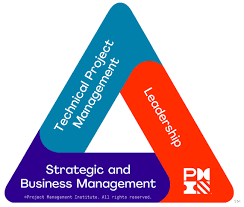 By following the training and passing the PMP exam, candidates will be able to understand and apply the processes and practices required to create efficient and high-performance work teams.
Those that pass the exam will also be able to assess that the success factors for each project exist within the organisation. They will learn to plan projects at each stage and scope: budget, scheduling, scope, quality, project activity, procurement and closure.
This will allow candidates to execute successful projects and create business value.
By following the training and passing the PMP exam, candidates will be able to understand and apply the processes and practices required to create efficient and high-performance work teams.
Those that pass the exam will also be able to assess that the success factors for each project exist within the organisation. They will learn to plan projects at each stage and scope: budget, scheduling, scope, quality, project activity, procurement and closure.
This will allow candidates to execute successful projects and create business value.
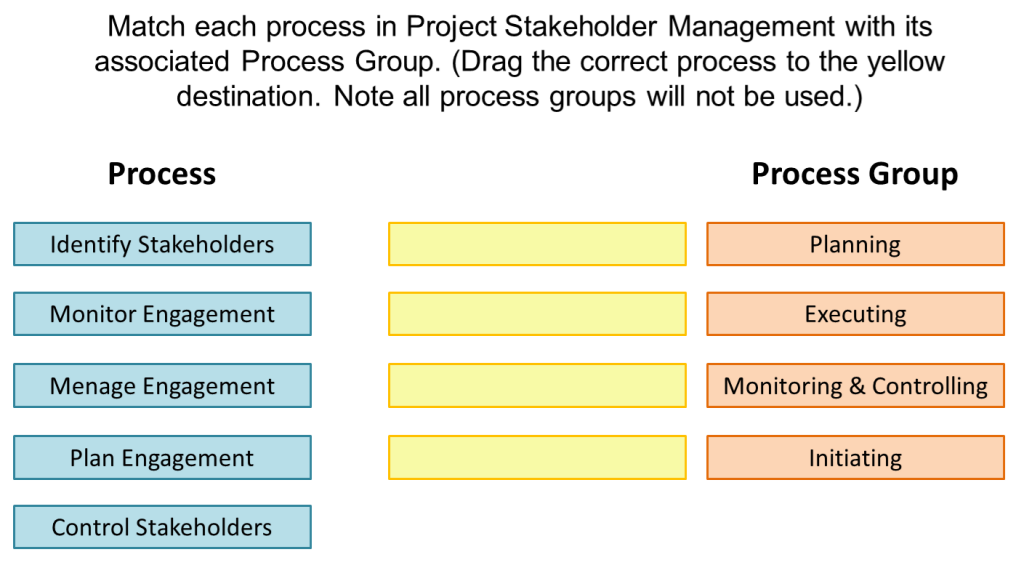
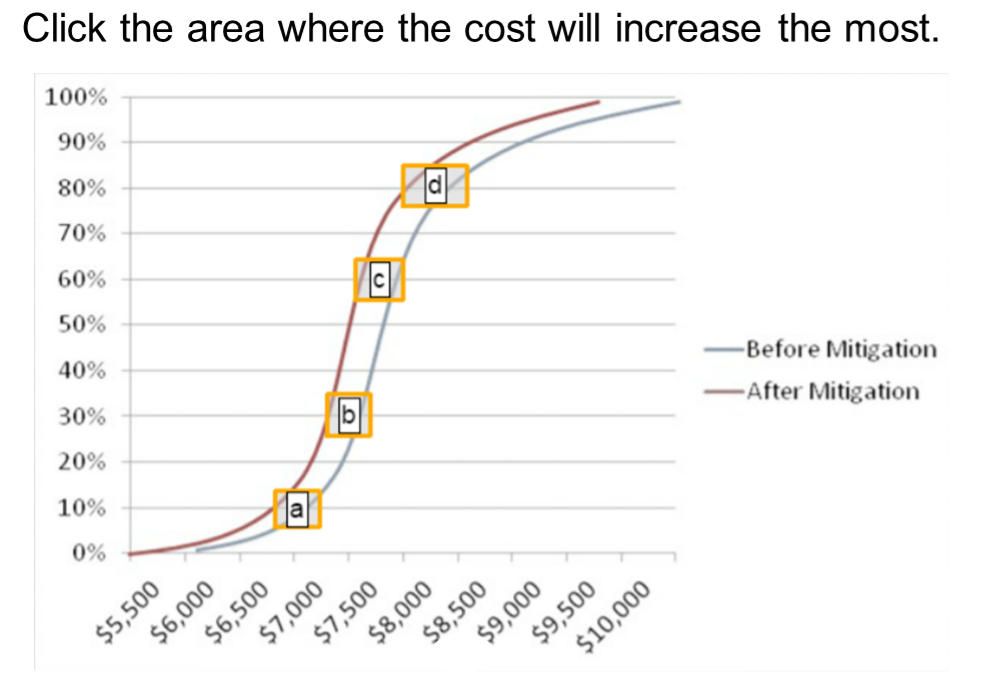
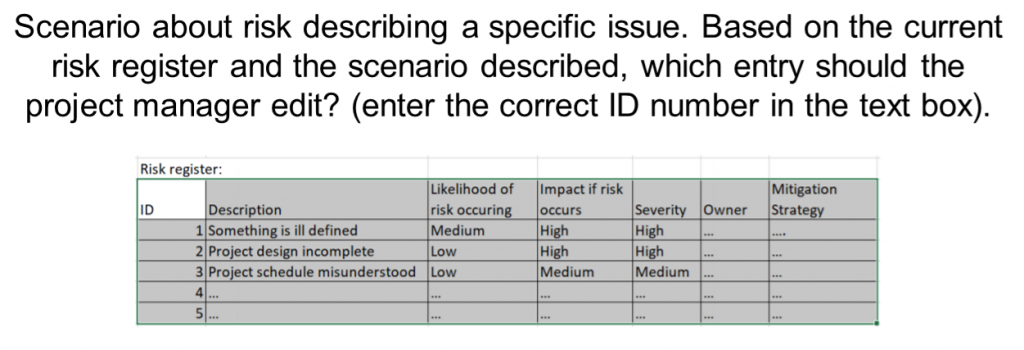
Read more
Prerequisites for accessing the PMP exam
In order to register for the exam, each candidate must meet all the prerequisites of one of the following groups:- Four-year degree.
- 36 months of project management experience.
- 35 hours of PMP training.
- High school diploma.
- Associate degree or equivalent.
- 60 months in project management.
- 35 hours of PMP training.
PMP exam format
- 180 questions.
- 230 minutes.
- 2 breaks of 10 minutes each.
- The questions are made out of a combination of different question types (multiple-choice, multiple responses, matching, hotspot and limited fill-in-the-blank).
Target audience PMP exam
As deductible from the prerequisites required to access the exam, the PMP certification is aimed at professionals who have already gained on-the-job experience. Specifically to Project Managers who:- Want or need training requirements to get PMP certification.
- Want to broaden their knowledge in Agile and hybrid approaches.
PMP exam objectives
Surely one of the main objectives of the following training and passing the PMP exam is to develop the skills theorized by the Project Management Institute within the Talent Triangle:- Technical management skills.
- Leadership skills.
- Strategic and business management skills.
 By following the training and passing the PMP exam, candidates will be able to understand and apply the processes and practices required to create efficient and high-performance work teams.
Those that pass the exam will also be able to assess that the success factors for each project exist within the organisation. They will learn to plan projects at each stage and scope: budget, scheduling, scope, quality, project activity, procurement and closure.
This will allow candidates to execute successful projects and create business value.
By following the training and passing the PMP exam, candidates will be able to understand and apply the processes and practices required to create efficient and high-performance work teams.
Those that pass the exam will also be able to assess that the success factors for each project exist within the organisation. They will learn to plan projects at each stage and scope: budget, scheduling, scope, quality, project activity, procurement and closure.
This will allow candidates to execute successful projects and create business value.
Topics of the PMP exam
The questions of the PMP exam can be divided into three main domains:- People: questions that focus on the skills and activities needed to lead a project team effectively.
- Process: questions aimed at verifying that the candidate knows the technical aspects of managing a project.
- Business environment: questions on the connection between projects and organizational strategy and how to acquire the maximum added value from this synergy.
Examples PMP exam questions
The PMI has published two documents with examples and prototype questions.- Here you can find some examples of multiple-choice questions,
- while here you can find the explanation and examples of the new types of questions.
Example multiple choice question
An accepted deadline for project approaches. However, the project manager realizes only 75% of the work has been completed. The project manager then issues a change request. What should the change request authorize? Answers: A. Additional resources using the contingency fund. B. Escalation approval to use contingency funding. C. Team overtime to meet schedule. D. Corrective action based on causes - right answer.Example Multiple responses question
You are running a project to engineer and implement a set of business processes and a software solution for customer relationship management. The project involves a large number of organizations―a major corporation and many suppliers of different sizes. During the project, you observe the effects of the differences between the companies’ corporate cultures. This leads to different expectations on how the project should be handled—as well as to frequent misunderstandings between stakeholders. Another effect is a growing degree of distrust and scepticism. What should you try first to integrate the diverse stakeholder groups? Answers: A. Focus on project work. As a project manager, you should not get distracted by big egos. B. Let the problems grow further until they are obvious for all. Then escalate them. C. Develop a joint quality policy for the project and seek a commitment by all organizations. D. Analyze the probability and impact of the risks linked with the situation - right answer. E. Plan how to respond to the risks - right answer.Example drag and drop (or matching) question
In this type of question, the candidate has to drag the right process to match the respective process group.
Example hotspot question
The candidate will be asked to interact with the digital graph and make calculations to estimate specific data points.

Example fill-in-the-blank question
The candidate will be asked to fill in space within the sentence with the correct answer. The RACI chart is an example of the ___________________, which shows the relationship between activities and the team members. The right answer to fill in should be: “Responsibility Assignment Matrix (RAM)” As an Accredited Trainer Partner (ATP) QRP International organizes PMP exam preparation courses. > Both our organisation as our trainers are accredited by PMI and can provide you with the training you need to obtain the PMP certificate. Contact us!
Date: 03/03/2021
VUCA is an acronym for ‘volatility, uncertainty, complexity and ambiguity.
The term is used to refer to the dynamic and fast-changing nature of the contemporary business environment. Programmes usually find themselves in a VUCA environment and organisations need to be aware of this.
The acknowledgement of the VUCA environment helps organisations to be able to respond in order to support their programmes and gain benefits.
Read more
Programme environment
As often thought, a programme is not simply ‘a big project’. A programme is a flexible and temporary structure in an organisation. It coordinates, directs and oversees the implementation of a set of projects to deliver outcomes and benefits that align with strategic objectives. The environment of the programme is unique and can include major change for the complete organisation. A well-thought programme is a huge undertaking, takes up a lot of time, costs and resources. A programme demands a lot from the organisation itself. It always exists in both an external and internal context and has different types of stakeholders. A programme is under a constant form of pressure and has to deal with constant external pressures and changes. However, the unique environment of the programme always stays the same. To be able to navigate in such a challenging environment, balance is key. The organisation needs to very clearly define what it can accept and offer, decide on what types of changes it can handle and how. It needs to figure out the pace of change that is feasible for the organisation. To be able to do so, the organisation needs strong programme management. Programme management helps organisations protect their significant investments and helps them address common challenges associated with major change initiatives. Programme management also ensures that outputs translate to outcomes and benefits, therefore delivering value to the organisation. The go-to certification for programme management is MSP by Axelos, which recently launched the MSP 5th edition.Current state to future state
If organisations are constantly aware and ready to respond to VUCA occurring in their environment, they survive and prosper. That means that organisations must continually improve their ability to respond to changes in their environment, which goes hand in hand with successful programmes. Programmes coordinate, direct and oversee the implementation of change initiatives in order to deliver value to the organisation. This change from the current state to the future state is never linear. Good programme management should therefore favour the incremental change approach. That means that at the start of a change initiative, the path to a future state is not yet completely defined. The incremental and constant change will help clear out what the future state looks like and will improve the ability of organisations to respond to changes in their environment. The MSP 5th edition guides users with a set of programme management approaches, leading to the creation of outcomes of benefit in an incremental way. In order to do this, it uses three ‘lenses’- Fundamental principles of programme management.
- Governance themes.
- Processes across a programme lifecycle.
MSP 5th edition
The principles, themes and processes have also been the core concept of the older version of MSP. What is new, however, is that the MSP 5th edition has taken into account the need and challenges of any real-world change programme. There is a special emphasis on the following:. Flexibility
The new MSP edition focuses on providing pragmatic and flexible guidance for a wide range of organisations.. Adaptability
The new MSP edition is streamlined and covers all essential elements, but leaves room voor tailoring according to the needs of the organisation.. Drivers for change
Instead of dividing programmes into different ‘types’, the new MSP edition addresses common drivers for change (reasons). Find out more about the multiple tools that you can use to raise change engagement.. Responsiveness
New in the latest MSP edition is the incremental approach to the programme lifecycle. MSP 5th edition looks more at the reasons why a programme is to be undertaken and considers the background and the adaptability instead of basic guidance. The guidance provides more certainty and guides users, by the use of a blueprint, to the future state of the organisation. The MSP 5th edition is adaptable and can work together with other frameworks like Agile, Lean and the sorts.Sources:
Axelos webinar MSP 5th edition (4th) MSP – Not just for programme managers Managing Successful Programmes – why a new edition?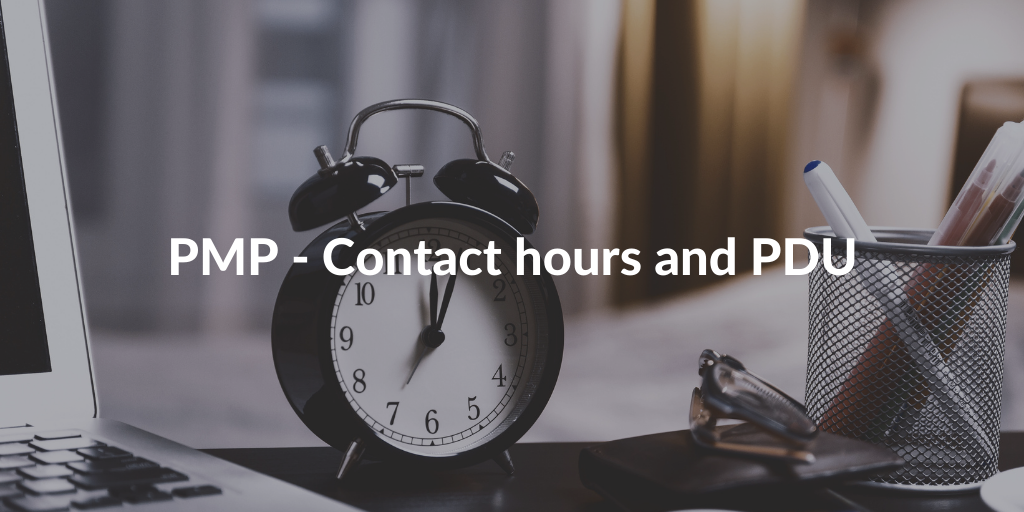
Date: 24/02/2021
Closely related to PMI and the PMP certification are the so-called Contact Hours and PDUs (Professional Development Units). These two terms are important to become and remain PMP certified.
We tried to clarify any doubts about the terminology and its meaning within the certification scheme.
The first distinction to be clarified concerns the fact that the Contact Hours must be accumulated before obtaining the certification while the PDUs must be collected after, in order to maintain the certification.
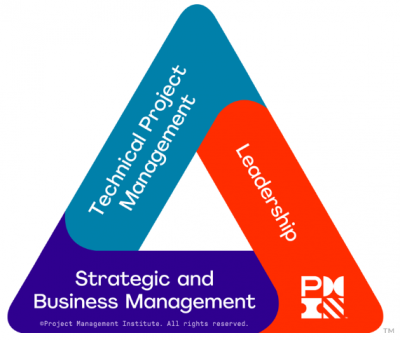 To maintain the PMP certification, it is obviously required to work also on the specific skills of the Talent Triangle: among the 35 minimum Education PDUs, the PMI requires in fact to collect at least 8 for each skill.
The scheme for acquiring the 60 PDUs necessary for maintaining the PMP certification is as follows:
To maintain the PMP certification, it is obviously required to work also on the specific skills of the Talent Triangle: among the 35 minimum Education PDUs, the PMI requires in fact to collect at least 8 for each skill.
The scheme for acquiring the 60 PDUs necessary for maintaining the PMP certification is as follows:
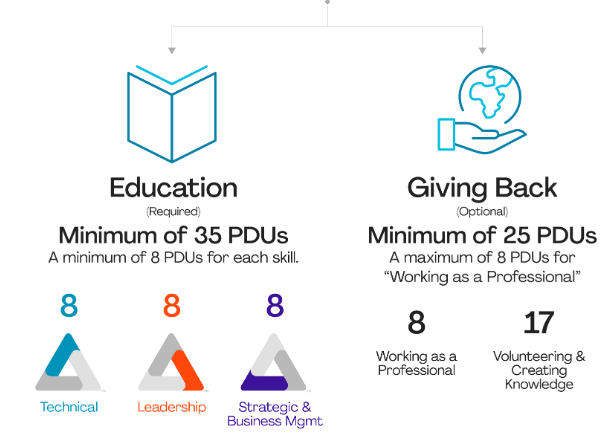 As an Accredited Training Provider (ATP) all the courses provided by QRP International guarantee the automatic recognition of Contact Hours and PDU points. Find out more about our PMP Exam preparation training.
March 23th 2021, QRP hosts a PMP Panel discussion.
We will discuss the PMP certification with experts and zoom in on;
PMP & Agility, PMP implementation, the new PMBoK and Exam.
Register here: PMP Panel Discussion.
Note; you can gain 1 PDU!
As an Accredited Training Provider (ATP) all the courses provided by QRP International guarantee the automatic recognition of Contact Hours and PDU points. Find out more about our PMP Exam preparation training.
March 23th 2021, QRP hosts a PMP Panel discussion.
We will discuss the PMP certification with experts and zoom in on;
PMP & Agility, PMP implementation, the new PMBoK and Exam.
Register here: PMP Panel Discussion.
Note; you can gain 1 PDU!
Read more
PMP Contact Hours
PMI defines ‘Contact Hours’ as follows:“One Contact Hour corresponds to 60 minutes of training received.”The Contact Hours are part of the prerequisites required to access the PMP certification exam. PMI (the Project Management Institute) has established that in order to register for the PMP exam, all candidates must meet certain prerequisites. One of these prerequisites is that the participant has followed (at least) 35 Contact Hours of training. Only if provided by an Authorized Training Partner (ATP) the 35 Contact Hours are automatically approved by the PMI and guarantee access to the exam without revision.
PMP PDU
PDUs, Professional Development Units, are blocks of time of 1 hour that a PMP certified professional must spend on training, study, teaching or volunteering. By accumulating 60 PDUs over three years, it is possible to maintain the PMP certification without having to repeat the training course and without having to take the exam again. PDUs come in two types: ‘Education PDUs’ and ‘Giving Back PDUs’. To maintain the PMP certification, a minimum of 35 Education PDUs and a maximum of 25 Giving Back PDUs must be collected. This means that the certification can be renewed with 60 Education PDUs and 0 Giving Back PDUs while it is not possible to do the opposite (i.e. 0 Education PDUs and 60 Giving Back PDUs).PDU Education
As the world of project, programme and portfolio management is in constant movement and evolution, it is important for the PMI that all certified PMP professionals are always up to date and work to keep up with market changes.- These PDUs can be acquired by following webinars, seminars, lectures or even by doing personal study.
- As an ATP, all courses and webinars delivered by QRP guarantee automatic recognition of PDU points.
PDU Giving Back
These PDUs correspond to the time spent volunteering, teaching or working, always in the context of project management.- Collecting PDU Giving Back allows increasing knowledge and skills giving way to grow professionally.
- While not required to maintain PMP certification, Giving Back PDUs are a great way to broaden your career options and enhance your role in the company.
PMI Talent Triangle and PDUs
The PMI Talent Triangle exposes the technical skills necessary for a Project Manager by dividing them into three main groups:- Technical Project Management.
- Leadership.
- Strategic and Business Management.
 To maintain the PMP certification, it is obviously required to work also on the specific skills of the Talent Triangle: among the 35 minimum Education PDUs, the PMI requires in fact to collect at least 8 for each skill.
The scheme for acquiring the 60 PDUs necessary for maintaining the PMP certification is as follows:
To maintain the PMP certification, it is obviously required to work also on the specific skills of the Talent Triangle: among the 35 minimum Education PDUs, the PMI requires in fact to collect at least 8 for each skill.
The scheme for acquiring the 60 PDUs necessary for maintaining the PMP certification is as follows:
 As an Accredited Training Provider (ATP) all the courses provided by QRP International guarantee the automatic recognition of Contact Hours and PDU points. Find out more about our PMP Exam preparation training.
March 23th 2021, QRP hosts a PMP Panel discussion.
We will discuss the PMP certification with experts and zoom in on;
PMP & Agility, PMP implementation, the new PMBoK and Exam.
Register here: PMP Panel Discussion.
Note; you can gain 1 PDU!
As an Accredited Training Provider (ATP) all the courses provided by QRP International guarantee the automatic recognition of Contact Hours and PDU points. Find out more about our PMP Exam preparation training.
March 23th 2021, QRP hosts a PMP Panel discussion.
We will discuss the PMP certification with experts and zoom in on;
PMP & Agility, PMP implementation, the new PMBoK and Exam.
Register here: PMP Panel Discussion.
Note; you can gain 1 PDU!






